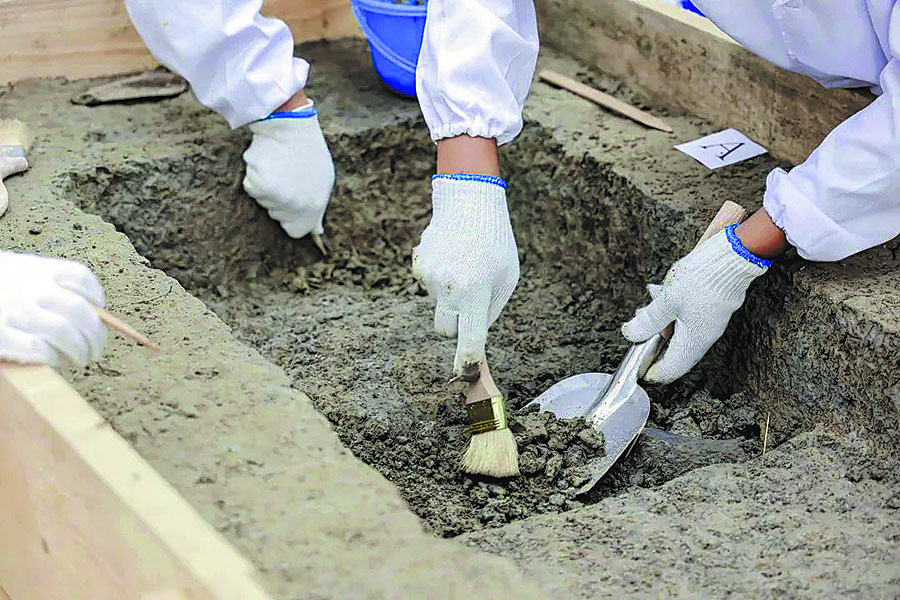

Scholars from home and abroad have conducted many studies on the origin, migration and differentiation of the Dong-Tai language family from different disciplinary perspectives, and have reached some consensus. Although different views still exist, the latest findings can provide a new perspective.
The ancient DNA, extracted from sources like fossilized bones, teeth and other sediments, provides clues to help decode human origins and evolutionary history in the Yangtze River Basin, which makes the tracing of migration routes in the region possible.
"Based on the preliminary findings, it is likely that the initial ancestors who arrived in Wuxi did so by migrating from the south to the Taihu Lake," says Liu Baoshan, director of the Wuxi Institute of Cultural Relics and Archaeology.
In June, the institute conducted a live archaeological excavation at the Ma'an site, uncovering two tombs from the Majiabang Culture. Within these tombs, researchers discovered two ancient human skeletons, and they successfully extracted ancient DNA from one of them.
The Ma'an site is significant not only for its ability to yield ancient genetic data, but also for its broader archaeological implications.
Excavations conducted between April last year and February this year unearthed a total of 26 tombs from the Majiabang Culture period. This extensive fieldwork, with a meticulous focus on preserving the archaeological context, has provided a wealth of material for multidisciplinary laboratory archaeological investigation.